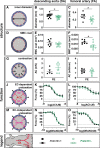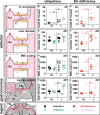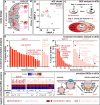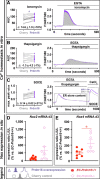Prdm16 Supports Arterial Flow Recovery by Maintaining Endothelial Function
- PMID: 33902304
- PMCID: PMC8221541
- DOI: 10.1161/CIRCRESAHA.120.318501
Prdm16 Supports Arterial Flow Recovery by Maintaining Endothelial Function
Abstract
[Figure: see text].
Keywords: arteries; endothelium; homeostasis; ischemia; transcription factor; vasodilation.
Figures







Comment in
-
Is Endothelial Dysfunction a Therapeutic Target for Peripheral Artery Disease?: PRDM16 is going out on a limb.Circ Res. 2021 Jun 25;129(1):78-80. doi: 10.1161/CIRCRESAHA.121.319448. Epub 2021 Jun 24. Circ Res. 2021. PMID: 34166078 Free PMC article. No abstract available.
References
-
- Potente M, Mäkinen T. Vascular heterogeneity and specialization in development and disease. Nat Rev Mol Cell Biol. 2017;18:477–494. doi: 10.1038/nrm.2017.36 - PubMed
-
- Fowkes FG, Rudan D, Rudan I, Aboyans V, Denenberg JO, McDermott MM, Norman PE, Sampson UK, Williams LJ, Mensah GA, et al. . Comparison of global estimates of prevalence and risk factors for peripheral artery disease in 2000 and 2010: a systematic review and analysis. Lancet. 2013;382:1329–1340. doi: 10.1016/S0140-6736(13)61249-0 - PubMed
-
- Annex BH. Therapeutic angiogenesis for critical limb ischaemia. Nat Rev Cardiol. 2013;10:387–396. doi: 10.1038/nrcardio.2013.70 - PubMed
Publication types
MeSH terms
Substances
LinkOut - more resources
Full Text Sources
Molecular Biology Databases

